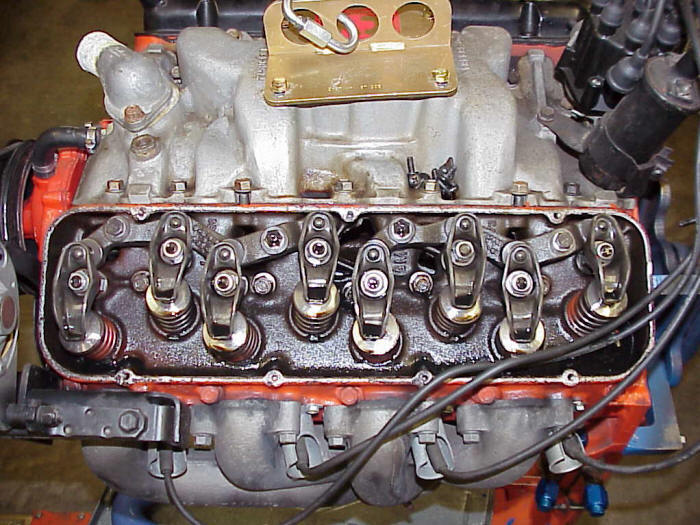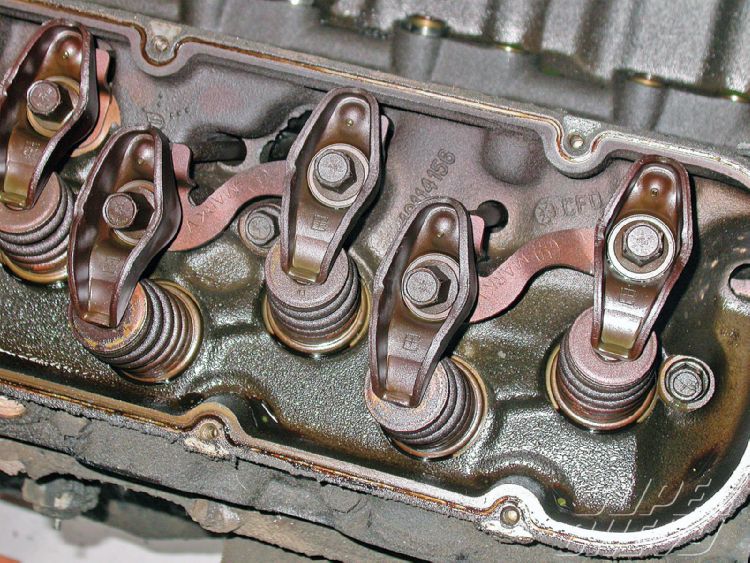You are using an out of date browser. It may not display this or other websites correctly.
You should upgrade or use an alternative browser.
You should upgrade or use an alternative browser.
how many engines can you get correctly identified?
- Thread starter grumpyvette
- Start date

how many guys can identify this engine, (ABOVE) and no its not a (366-396-454) like pictured below???

Randy_W
reliable source of info
:mrgreen:You got 18 right out of 19.
ITS THE FAMOUS DAYTONA CHEVY 427 mystery engine, that became the prototype, that evolved into the MARK IV big block Chevy

Smokey Yunick's 427 Mk II Mystery Engine
You just knew Smokey Yunick would always have an ace up his sleeve. For the Daytona 500 in 1963 he brought two. The first was a young Texas Sprint Car driver his friend Monk King, a Pontiac dealer in Dallas, had tipped him to. Johnny Rutherford had never driven a stock car on a super speedway, but the kid was quick and Smokey figured a race driver was a race driver.
Yunick's second ace was Chevrolet's 427 Mk. II V-8, the engine that quickly became known as the "mystery motor." Designed by Richard L. Keinath, the Mk II was the missing link between Chevy's Mk I 348/409 engine and the Mk IV 396 V-8 introduced in 1965. (The Mk III was an ultra-big-block project, stillborn.) The Mk II's short-block used the same 4.84-inch bore spacing as the 348/409, and its 4.31-inch bore and 3.65-inch stroke were identical to those of the 427ci Z11 version of the 409. However, the cylinder heads employed valves canted in two planes, just like in the "porcupine" engines that would appear a few years later. Smokey believed that despite a few teething troubles the engine was good for 600 hp or more.
There was only one problem with this scenario: On January 21, 1963, barely days after Yunick and the other four Chevy factory-supported teams received their final engine packages and only a few weeks before Daytona, General Motors Chairman Fred Donner ordered all divisions to shut down their racing programs effective immediately. The Mk. II V-8 was marooned. Some sources say 42 engines were produced before the plug was pulled; others claim as few as 18.
But the racers already had their engines, and as private contractors they were going to use them for as long as the parts held out. Yunick and Rutherford had paired up too late to run for the pole, which Fireball Roberts won with a lap of 160 mph in a 421 Pontiac. But Rutherford soon had Yunick's '63 Impala sport coupe flying, clocking a lap at 165.183 mph. It was not only the fastest speed of the month; it was a world's closed-course record for a time. Lone Star J.R. won his 100-mile qualifying race too, but in the 500 he scraped the wall off Turn 2 and spun to the infield, losing four laps before recovering to finish ninth. Smokey never used Rutherford again, convinced there was something wrong with his eyesight. Despite the apparent handicap, the kid from Texas went on to win the Indy 500 three times.
Smokey Yunick's 427 Mk II Mystery Engine
You just knew Smokey Yunick would always have an ace up his sleeve. For the Daytona 500 in 1963 he brought two. The first was a young Texas Sprint Car driver his friend Monk King, a Pontiac dealer in Dallas, had tipped him to. Johnny Rutherford had never driven a stock car on a super speedway, but the kid was quick and Smokey figured a race driver was a race driver.
Yunick's second ace was Chevrolet's 427 Mk. II V-8, the engine that quickly became known as the "mystery motor." Designed by Richard L. Keinath, the Mk II was the missing link between Chevy's Mk I 348/409 engine and the Mk IV 396 V-8 introduced in 1965. (The Mk III was an ultra-big-block project, stillborn.) The Mk II's short-block used the same 4.84-inch bore spacing as the 348/409, and its 4.31-inch bore and 3.65-inch stroke were identical to those of the 427ci Z11 version of the 409. However, the cylinder heads employed valves canted in two planes, just like in the "porcupine" engines that would appear a few years later. Smokey believed that despite a few teething troubles the engine was good for 600 hp or more.
There was only one problem with this scenario: On January 21, 1963, barely days after Yunick and the other four Chevy factory-supported teams received their final engine packages and only a few weeks before Daytona, General Motors Chairman Fred Donner ordered all divisions to shut down their racing programs effective immediately. The Mk. II V-8 was marooned. Some sources say 42 engines were produced before the plug was pulled; others claim as few as 18.
But the racers already had their engines, and as private contractors they were going to use them for as long as the parts held out. Yunick and Rutherford had paired up too late to run for the pole, which Fireball Roberts won with a lap of 160 mph in a 421 Pontiac. But Rutherford soon had Yunick's '63 Impala sport coupe flying, clocking a lap at 165.183 mph. It was not only the fastest speed of the month; it was a world's closed-course record for a time. Lone Star J.R. won his 100-mile qualifying race too, but in the 500 he scraped the wall off Turn 2 and spun to the infield, losing four laps before recovering to finish ninth. Smokey never used Rutherford again, convinced there was something wrong with his eyesight. Despite the apparent handicap, the kid from Texas went on to win the Indy 500 three times.
